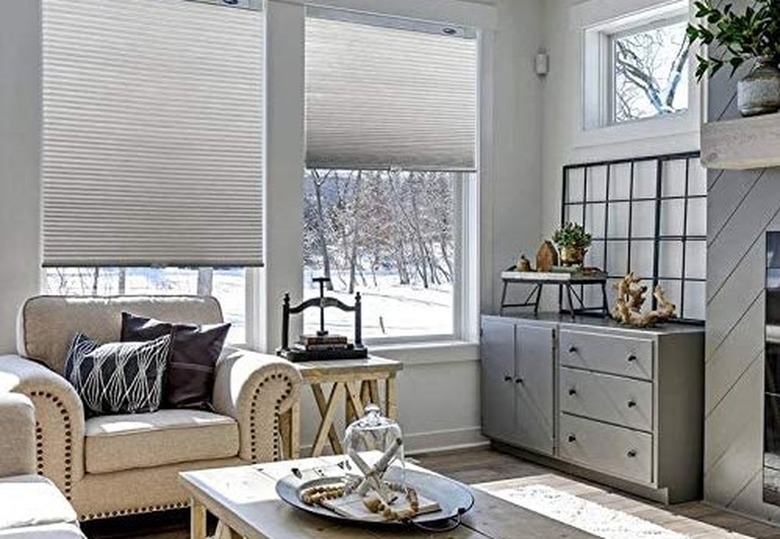Hanging Blinds With Tension Rods
We may receive a commission on purchases made from links.
Window blinds are an easy way to add privacy and block sunlight in any room, but drilling holes can be difficult, messy, and damaging to your window frames. No-drill window blinds offer an alternative window covering that stays in place without the need for screws. They're usually easy to install and take down if you change your mind.
Benefits of No-Drill Window Blinds
Benefits of No-Drill Window Blinds
Renters can benefit from tension rod window blinds because they can have the window coverings they want without damaging the window frames. Your chances of keeping your deposit go up when you choose these types of renter-friendly decor ideas. Homeowners might also like the convenience and hole-free installation.
Other benefits of tension rod window treatments include:
- Quick, easy installation.
- Ability to adjust the height or placement if it's uneven.
- Easy to swap out if you want to change the look.
- No need for a drill or other power tools.
However, no-drill window treatments aren't ideal in all situations. If you prefer heavier window coverings, it might be difficult to use this drill-free style. They can also be a pain if you have kids who might pull on the blinds or pets that could jump or climb on them, as this can cause them to come down frequently.
Tension Rod Window Blinds
Tension Rod Window Blinds
You can use tension rods to hang curtains, but you can also buy blinds with tension rods built into them. This creates one seamless unit that looks just like regular blinds. You can find them in all types of blinds, including Roman shades, fabric roller shades, miniblinds, and cellular blinds. The tension mechanism can often hold more weight than other no-drill shade options, providing more variety, but they can still come loose if you pull too hard on the blinds.
The tension created by the rod against the window frame holds the blinds in place. They're relatively easy to install, with some simply snapping in place with spring-loaded bars. On others, you need to twist them to extend or shorten them to get a snug fit within the window frame.
Magnetic Door Blinds
Magnetic Door Blinds
If you have a metal door, magnetic blinds are an option to cover the glass panels. They come with strong magnets built into the top piece that stick directly to the metal door. You can pop them on and off instantly, which makes it easy to clean the windows. They can move on doors if you swing them open or closed quickly since the magnet can slide with the sudden movement.
Peel-and-Stick Window Blinds
Peel-and-Stick Window Blinds
Another alternative is a self-adhesive window blind that sticks to the window frame. This option is usually only available in lightweight materials, such as paper, since excess weight can pull the adhesive away from the frame. While not as durable as other blind materials, paper is easier to modify if you need to cut it to fit the window.
The rail features a strong adhesive with paper backing that you remove when you're ready to install it. Wipe the window frame first to make sure there's no grease, dust, or other debris that could keep it from sticking and check for peeling paint that could flake off with the adhesive. Press the blinds firmly against the frame to secure them in place.
Window Corner Brackets
Window Corner Brackets
If you want to pair curtains or drapes with your blinds, corner brackets give you a no-drill option if your windows have trim. They slide onto the corner of your window trim with no need for nails or adhesives. You can place the curtain rod onto the corner brackets to hold your preferred window treatments.
